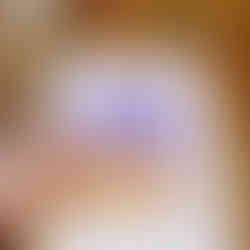Cross stitch is a labour of love, you spend days, weeks, months or even years working hard to create your own piece of stitched art. But all too often the process of framing seems a little too daunting or faffy, so that completed piece of work, your pride and joy, gets shoved in a bag to be lost at the bottom of a cupboard for the rest of time. This cannot happen! Your wonderful makes deserve to be on show, after all, you worked so hard! So I thought I would show you how I finish and frame my cross stitch pictures so that you can have a little more confidence in doing it too. For this I will be framing my recently completed (again!) A Seaside Rendezvous Cross Stitch Kit.
I'm going to start with a disclaimer that I am NOT a professional framer. I'm 100% sure that what I do isn't perfect, but you know what, it works for me! If you are looking for a more professional job there are lots of wonderfully talented framers around such as Holly Frames in Whitley Bay who have framed many a completed TSK picture! If you have used a framer for cross stitch pieces, and recommend them, please do pop their details (name and location) in the comments! That would be really useful to those looking for a trusted framer in their area!
The second thing I should mention... this is NOT an advert for Morrisons own brand Fruit & Fibre cereal! Other cereals are available... just not at present in my cupboard!
1. Prep your materials!

(OPTIONAL) Wash your completed stitches - I will write another blog covering this at a later date as it's a whole topic on it's own!
Gather additional materials you may need including embroidery scissors, all purpose scissors for cutting card, a pencil, ruler, needle, thread, frame and cereal box.
Prep your card by drawing a rectangle approximately half an inch smaller than the frame. In this case the frame is 7x9inches so I have cut a rectangle of 6.5x8.5inches.
Using your all purpose scissors, cut out your card, then lay your card plain side down on your upturned project roughly central to the picture.
2. Lace it!
For this step I use a full thread (ie 6 strands). It can be a little tricky to thread the needle (that's probably the hardest part of this entire process!) but it provides the most strength.
Fold the edges of the fabric over the back of the cardboard and, using your needle and thread, starting at the top of the card section, stitch loosely left to right across the back until you're half way down. I bring my needle through the fabric approximately an inch away from the edge, try to keep the gaps even between stitches, and try to use the same 'column' of holes for the stitches all the way down.
Once you're at the half way point, turn over your work to check that it is straight and that the picture is central. If it needs adjustment do this before turning it back over and tightening the threads (like a corset!), then continue stitching back and forward to the bottom of the card section before securing the thread.
Then repeat the process top to bottom. It is now ready to pop into your frame.
And finally, sit back and marvel at your skills! Well done you should be super proud of what you've accomplished!
A few notes about the materials I have used here...
Firstly, I use card from a cereal box for the mount board for my projects, partly because I grew up watching Blue Peter and so retain the belief that you can make anything out of a cereal box, fairy liquid bottle and pipe cleaners, but also because all of my kits are full coverage so it doesn't need to be white behind, and while a non-acid free material can discolour the fabric after a few decades, it won't be seen as no fabric is showing.
Secondly I have used a 7x9inch frame with a white card mount with 5x7inch aperture. This gives a little bit of wiggle room inside the frame to account for my lack of perfection! I also don't use the glass from the frame. Keeping the glass in a frame can help to protect it, however, I prefer the look without and glass can make photographing them difficult (which obviously I need to do!). So instead I just make sure to keep them out of direct sunlight and away from anything that could potentially damage it. For example, not in the kitchen or bathroom!
Lastly, while you could use your left-over kit thread, I would suggest saving that for future projects. Many of the colours used within TSK patterns are used on the other patterns, so once you've built up a collection of leftovers you could use them for another project by purchasing a PDF pattern, and the extra threads and fabric you need, saving yourself money compared to purchasing a full kit! Instead, I would suggest, as I have here, and obviously if you have some, using up some waste thread that you may have lying around the house. I have a small tin (previously housed biscuits, of course!) that I keep unidentifiable, therefore effectively unusable waste threads.
If you have any further questions, please send me a message
and I will be happy to help!
.jpg)
















If you live in the Kent area, Craft Frames Ltd , Dartford, are very professional framers. Theylace cross stitch too